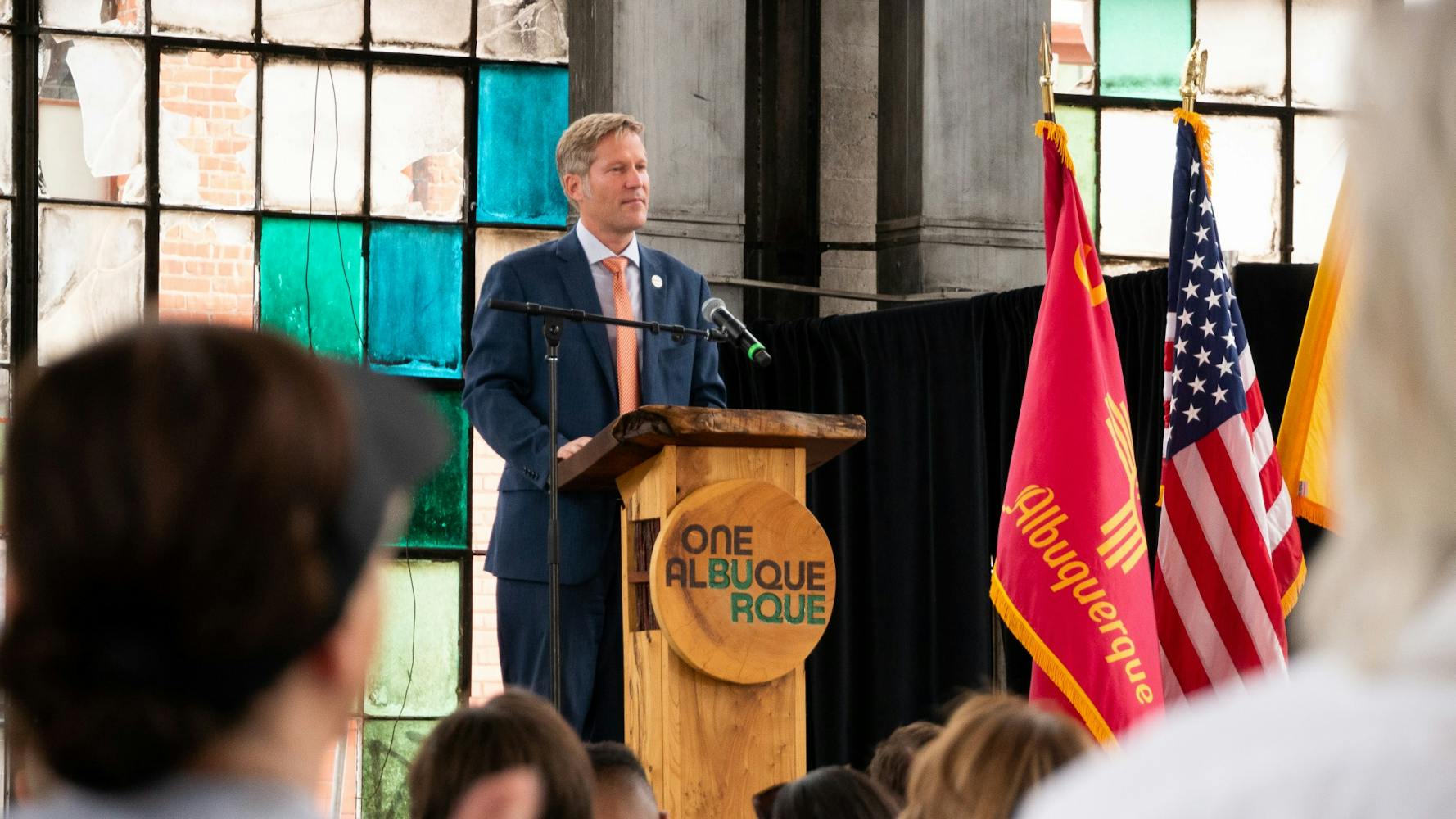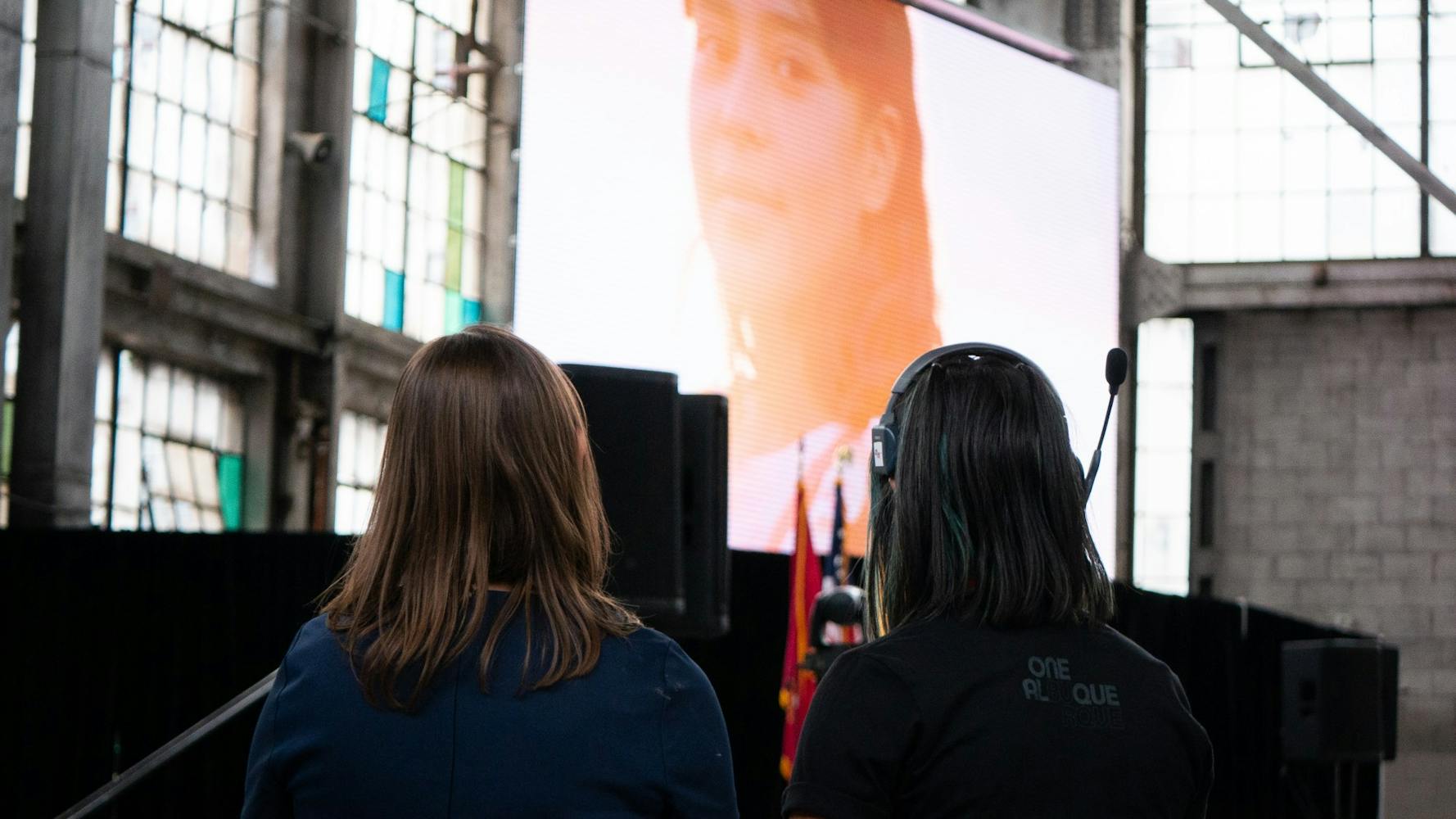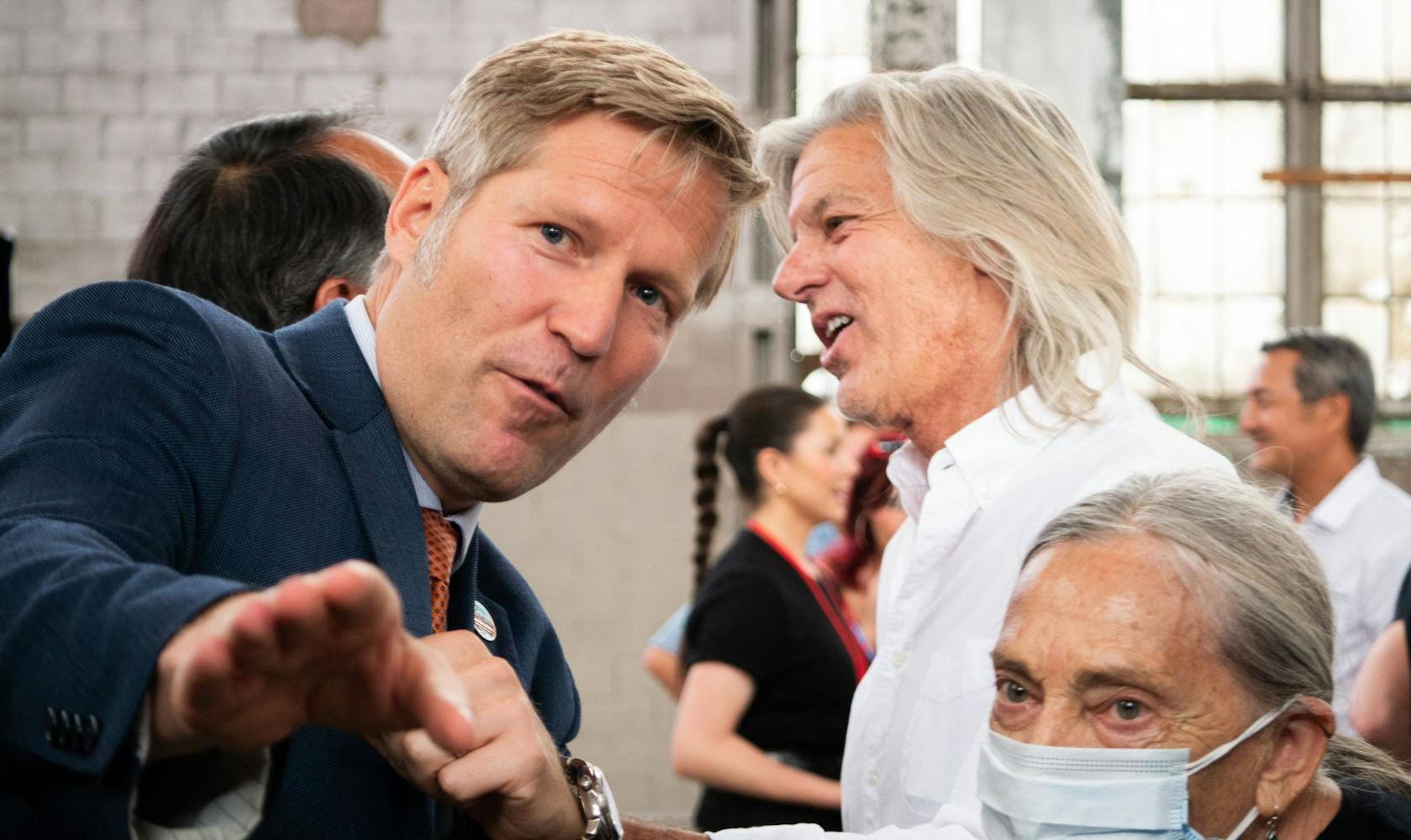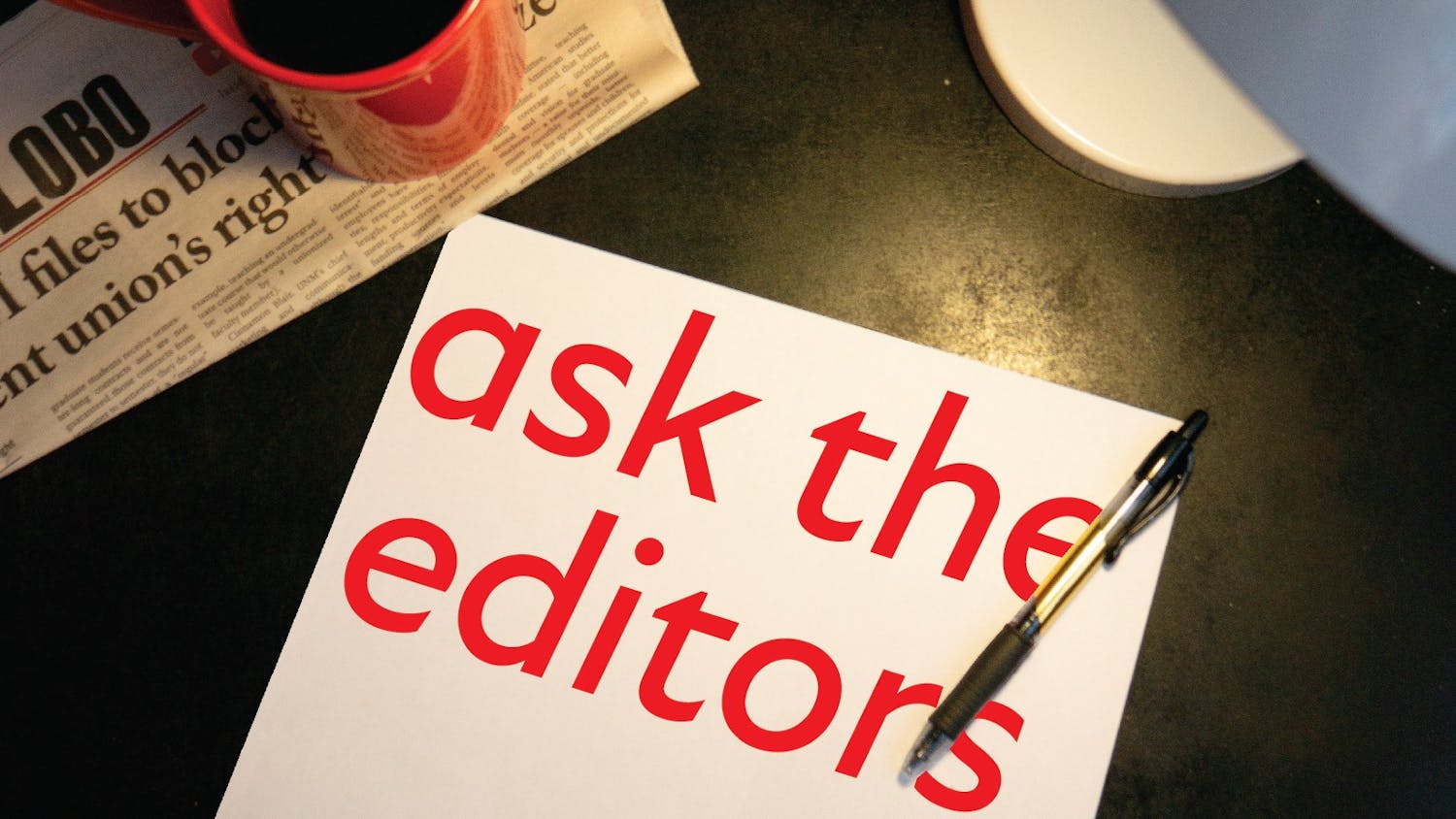On Saturday, June 25, Albuquerque residents gathered at the newly refurbished Rail Yards to listen to the annual remarks on the state of the city by Mayor Tim Keller. His remarks focused on the city’s recent efforts toward combating crime, homelessness and climate change in response to the last few years of national and local instability.
In response to an increase in criminal incidents over the COVID-19 pandemic, Keller’s administration has increased funding to the Albuquerque Police Department this year by $50 million. This money is to be used for new technology such as automated speed cameras, gunshot detection technology and digital crime enforcement, according to
Deputy Chief of Police Cecily Parker.
Since May 25, the automated speed cameras have given out over 10,000 speeding tickets in an effort to curb street racing and speeding in the community, according to Chief of Police Harold Medina.
Keller’s administration is also moving to suspend monitoring from the Department of Justice for one-fourth of the settlement agreement put forth in 2014 in partnership with the DOJ, which required APD show measurable growth in proper law enforcement procedure, including a necessary decrease in use of force; what elements of the agreement reside within the one-fourth number were not specified
The administration believes that APD has shown notable change in recent years, citing a recent report from the APD Monitor. The independent monitor of APD’s compliance showed near full compliance in every category, including policy, training and field-action (at 100%, 99% and 70% compliance, respectively). The Department, however, was ranked as the second highest for fatal shootings in 2021, according to The Guardian — this statistic was not mentioned during the address.
“APD has demonstrated those results, and now it’s time to focus on those remaining reform tasks and get out officers assigned to fight crime,” Keller said.
Keller credits this change primarily to law enforcement, but also acknowledged the new third branch of law enforcement, the Albuquerque Community Safety department, with helping to alleviate the load on police officers and 911 operators by responding to calls regarding mental health, substance abuse and homelessness issues. With new funding in Keller’s budget, the department, headed by Director Mariela Ruiz-Angel, plans to move officers to 24/7 coverage, so that someone is always available to respond in these instances; prior to this, ACS officers were only available from 7 a.m. to 10 p.m.
As a non-punitive body, ACS hopes to provide equitable support for all people in Albuquerque, including the unhoused. However, Keller’s administration and law enforcement clear dozens of encampments each week, and the ACS was recently left out of a conversation of how to address the homelessness issue at a City Council meeting on June 22.
“We will not arrest people who have not committed an arrestable crime. We will not pull your officers off of your 911 calls for someone passed out under a tree. And we will not allow landlords to discriminate against renters using housing vouchers. What we will do is be much more assertive — we are going to improve public safety, and we are going to provide pathways off the street,” Keller said.
Keller also announced the convening of a second round of the Metro Crime Initiative, a cross-agency commission which began in July 2021, designed to reform broken aspects of the city’s justice system through more officers and funding, including fixing ankle monitors; monitors prior to 2021 were not suitably monitored, according to Keller and the city of Albuquerque.
Get content from The Daily Lobo delivered to your inbox
Through three sessions, Keller plans for the second round (dubbed “MCI II”) to focus first on gun violence, then drugs and behavioral health, then domestic violence. Action items will be planned at the meetings, the first of which will be held on July 16.
“We’re going to keep pushing for real change when it comes to spiking gun violence, fentanyl trafficking and treatment, domestic violence and that persistent revolving door,” Keller said.
By the end of 2022, the Gateway Center — currently under construction at the Gibson Health Hub — aims to connect the unhoused population with social and health services all in one location, so that they have access to a stable path off the streets. Emergency response, including ACS, will also be available, according to Keller.
“Our goal is to create a low-barrier, trauma-informed space where folks can develop and act on a plan to find stability,” said Gateway administrator Cristina Parajón.
At phase one, the shelter will house 200 female residents at a time, though in subsequent phases, they hope to expand it to shelter and aid more people of all genders, according to Parajón.
Housing vouchers, available through the Albuquerque Housing Authority exclusively online, aim to provide aid to low-income individual families looking to rent affordable and safe private housing. With the support of the City Council, Keller’s administration pledged $15 million more to these vouchers, looking to provide housing for 1,500 unhoused people.
In terms of Albuquerque’s environmental outlook, Keller announced that the city government is now running 88% solar power, looking to be at 100% by 2025. This power comes in large part from the city’s construction of the third-largest solar array ever built entirely on
Native American land — 500 acres of the Jicarilla-Apache nation. Public transportation vehicles are currently in the process of being converted to entirely hybrid and electric options.
In his speech, Keller also discussed the creation of a new landmark, the Rail Trail, a heritage trail set to run from the Rail Yards through Central to Civic Plaza, eventually running all the way to the Sawmill and Old Town. The area of the greater Rail Trail is historically underserved and features primarily non-vehicular renters (32% of which are below the poverty line). This area contains 8,450 residents, with no word from the city on how many, if any, of them will be affected by displacement. The city is ready with phases one and two of the project.
“I believe the real state of the city is a city that is holding the line during difficult times. It is a city that has not and will not stop advancing toward a horizon that brings out the best in Burque,” Keller said. “That is the state of our city.”
Spenser Willden is the culture editor at the Daily Lobo. He can be contacted at culture@dailylobo.com or on Twitter @spenserwillden








